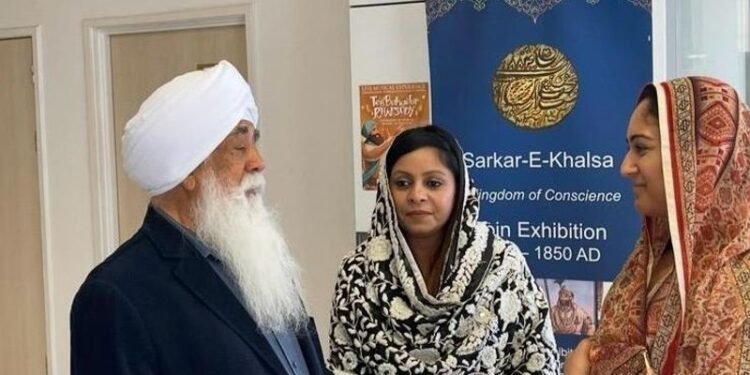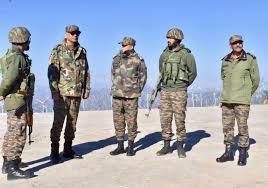Inside a hall, scholars, spiritual teachers, and educators have come together under the theme “Unpacking Gurmat Education”.
The partnership is rooted in a simple but powerful idea, that education should build not just minds, but character.
A side room full of history
As the discussion unfolds, a smaller, adjacent hall catches my eye. A bold banner marked Sarkar-e-Khalsa of Maharaja Ranjit Singh stands at its entrance, inviting curiosity. Inside, I meet Ravinder Pal Singh Kohli, a UK-based Sikh whose voice carries the lilt of old Rawalpindi.
He introduces himself as the curator, but more than that, he is the inheritor. This exhibition is not a public archive. It is personal history, passed down from his great-grandparents in Rawalpindi, now in Pakistan. What he has assembled under his Global Sikh Vision non-profit and under the patronage of Bhai Sahib reveals a beautifully presented, moving experience.
A journey through coins, from 1469 to 1849
The room is filled with glass cases containing Sikh currency from Guru Nanak Sahib’s time to the British annexation of Punjab in 1849. Each coin, each shell, is a relic of a larger moment.
Among the rarities
Copper coins reflecting the denomination Guru Nanak Sahib used for his 20-rupee Sacha Sauda, marking the beginning of langar
Silver pieces tied to Makhan Shah Lubana, who discovered Guru Tegh Bahadar at Baba Bakala in 1664
Gold mohurs from the early 1700s used to buy land for the cremation of the Chhote Sahibzade after their martyrdom in Sirhind
Coins issued under bounty orders, including those minted during Lahore governor Mir Mannu’s brutal repression of Sikhs in the mid-1700s
Each artefact is labelled with dates and context. Some bear images of traditional weapons — Khanda, Katar, Kirpan — etched not for war-glorification, but as reflections of self-defence during times of survival. Others are marked with inscriptions like Sat and Akal Sahai, truth and divine support.
Many early coins are in Farsi, but later issues begin to feature Gurmukhi, hinting at a growing public embrace of the Sikh script. Remarkably, some coins also include symbols from non-Sikh communities, a quiet nod to Punjab’s pluralism under the Sikh leadership.
When metal becomes memory
The collection is much more than numismatics. It’s a journey through resistance, identity, and everyday life.
What stood out, too, was the care with which Kohli has preserved and presented the collection structured into historical phases:
From the Gurus (1469–1708)
To the early Sikh rule of Baba Banda Singh Bahadar (1710–1716)
Through the Misl period preceding Maharaja Ranjit Singh’s rule
Maharaja Ranjit Singh’s rule (1799–1849)
Values, then and now
While the conference a hall away explored how the Guru’s teachings can inform the future of education, this exhibition complemented that conversation.



















